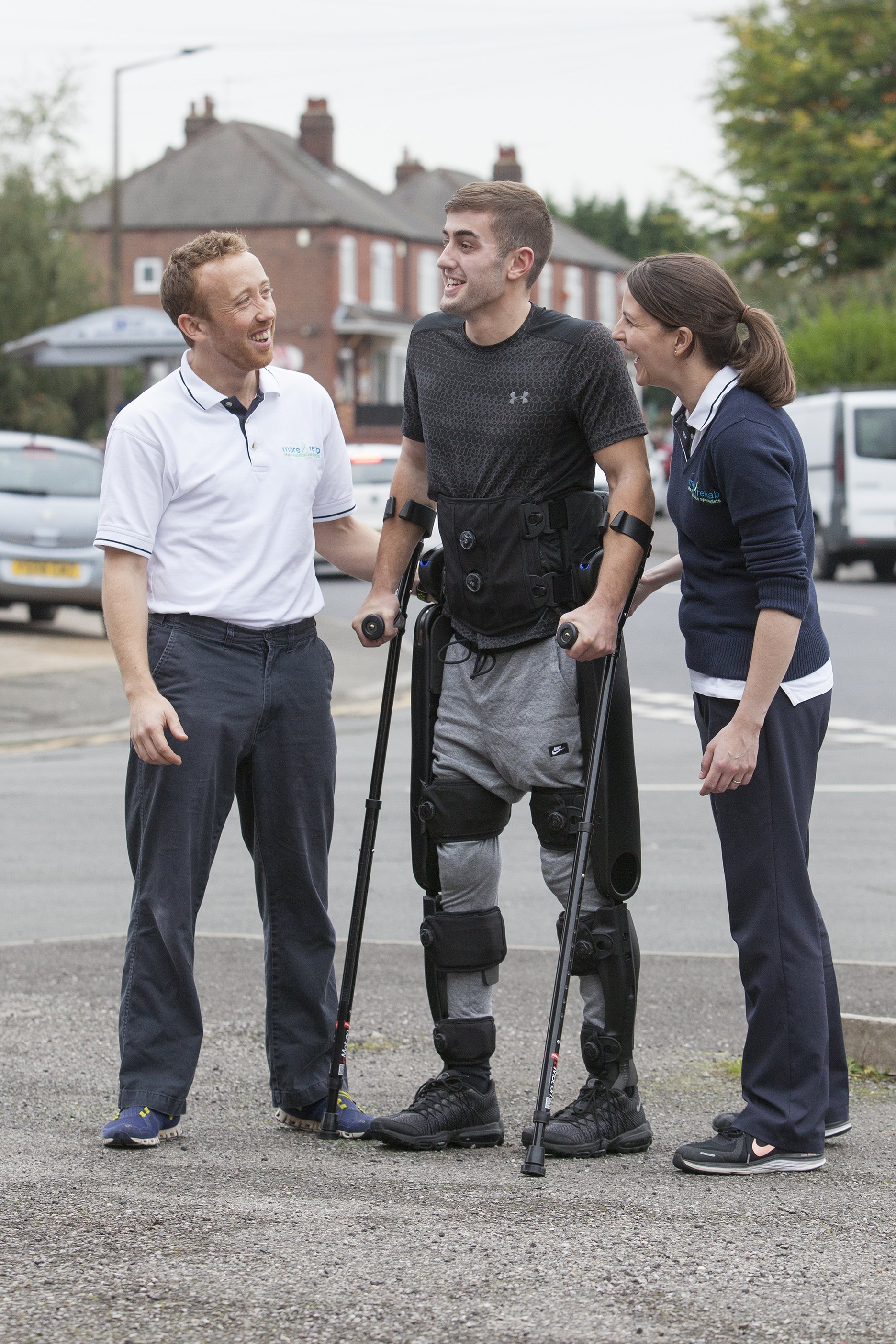Taking your Indego Home
The Indego exoskeleton can claim features that make it the most practical powered orthosis on the market for personal use by suitable clients. It’s the lightest product of it’s kind (12 kg in weight) and breaks down into five components so it’s easy to transport or even wear in wheelchair. These aspects alone give the Indego an edge but this would not be enough if the hardware and software were in some way limiting.
Let’s take a look at the structure.
The device has four powered joints to move the user's hips and knees in the vertical plane. An integrated ankle foot orthosis (AFO) provides ankle stability.
Sensors in the device interpret postural cues from the user to control the two different phases of gait (stance and swing phase). The lndego can be safely used on indoor and outdoor surfaces including carpet, hard floors, level grass, pavement, sidewalks and ramps with a grade equal to or less than 5°. It is designed to be used in conjunction with a stability aid, specifically platform walkers, rolling walkers and/or forearm crutches. The user’s condition will dictate what type of walking aid will be needed.
An important point to make is that even though a client has passed their “Medical Clearance” and is intent on purchasing an Indego, they won’t be able to take it home until they (and potentially a support person) have received essential training.
The Indego is not something you ship to a client, they put it on and away they go!
Using an Indego involves training. Training is essential to keeping the user safe and ensuring that they gain the greatest level of independence from their purchase.
In order for a patient to be able to take their lndego Personal home for personal use, they and potentially their support person must complete a 30 - 40 hour lndego Personal training course.
Level I training focuses on home and limited community ambulation. The tasks completed include:
managing automatic and latched doors,
walking on level and un-level outside surface and
walking over 5° ramps.
Level II training focuses on the patient obtaining longer walking distances and a faster gait speed for community integration. Tasks completed include car transfers, crossing 2-way streets, using elevators and navigating curb cut outs.
The lndego Personal must undergo periodic inspection every 24 months to ensure optimal functionality. During inspection parts may be tightened, repaired or replaced. This inspection is an integral part of the device's life.
If you are interested in learning more about the Indego journey please contact us.
We can explain everything and connect you to one of our clinical partners who can undertake an assessment of suitability. Our clinical partners have staff trained to carry out the personal use training to get you to the maximum level of independence.


